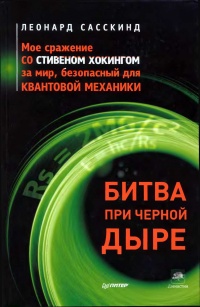Книга Просвещение продолжается. В защиту разума, науки, гуманизма и прогресса - Стивен Пинкер
Шрифт:
Интервал:
Закладка:
Brynjolfsson, E., & McAfee, A. 2015. Will humans go the way of horses? Foreign Affairs, July/Aug.
Brynjolfsson, E., & McAfee, A. 2016. The Second Machine Age: Work, progress, and prosperity in a time of brilliant technologies. New York: Norton.
Bulletin of the Atomic Scientists. 2017. Doomsday Clock timeline. http://thebulletin.org/timeline.
Bunce, V. 2017. The prospects for a color revolution in Russia. Daedalus, 146, 19–29.
Bureau of Labor Statistics. 2016a. Census of fatal occupational injuries. https://www.bls.gov/iifoshcfoi1.htm.
Bureau of Labor Statistics. 2016b. Charts from the American Time Use Survey. https://www.bls.gov/tus/charts/.
Bureau of Labor Statistics. 2016c. Time spent in primary activities and percent of the civilian population engaging in each activity, averages per day by sex, 2015. https://www.bls.gov/news.release/atus.t01.htm.
Bureau of Labor Statistics. 2017. College enrollment and work activity of 2016 high school graduates. https://www.bls.gov/news.release/hsgec.nr0.htm.
Buringh, E., & Van Zanden, J. 2009. Charting the “rise of the West”: Manuscripts and printed books in Europe, a long erm perspective from the sixth through eighteenth centuries. Journal of Economic History, 69, 409–45.
Burney, D. A., & Flannery, T. F. 2005. Fifty millennia of catastrophic extinctions after human contact. Trends in Ecology and Evolution, 20, 395–401.
Burns, J. 2009. Goddess of the market: Ayn Rand and the American right. New York: Oxford University Press.
Burtless, G. 2014. Income growth and income inequality: The facts may surprise you. Brookings Blog. https://www.brookings.edu/opinions/income-growth-and-income-inequality-the-facts-may-surprise-you/.
Buturovic, Z., & Klein, D. B. 2010. Economic enlightenment in relation to college oing, ideology, and other variables: A Zogby survey of Americans. Economic Journal Watch, 7, 174–96.
Calic, R., ed. 1971. Secret conversations with Hitler: The two newly iscovered 1931 interviews. New York: John Day.
Caplan, B. 2007. The myth of the rational voter: Why democracies choose bad policies. Princeton, NJ: Princeton University Press.
Caplow, T., Hicks, L., & Wattenberg, B. 2001. The first measured century: An illustrated guide to trends in America, 1900–2000. Washington: AEI Press.
CarbonBrief. 2016. Explainer: 10 ways “negative emissions” could slow climate change. https://www.carbonbrief.org/explainer-10-ways-negative-emissions-could-slow-climate-change.
Carey, J. 1993. The intellectuals and the masses: Pride and prejudice among the literary intelligentsia, 1880–1939. New York: St. Martin’s Press.
Carey, M., Jackson, M., Antonello, A., & Rushing, J. 2016. Glaciers, gender, and science. Progress in Human Geography, 40, 770–93.
Carey, S. 2009. Origins of concepts. Cambridge, MA: MIT Press.
Carlson, R. H. 2010. Biology is technology: The promise, peril, and new business of engineering life. Cambridge, MA: Harvard University Press.
Carroll, S. M. 2016. The big picture: On the origins of life, meaning, and the universe itself. New York: Dutton.
Carter, R. 1966. Breakthrough: The saga of Jonas Salk. Trident Press.
Carter, S. B., Gartner, S. S., Haines, M. R., Olmstead, A. L., Sutch, R., et al., eds. 2000. Historical statistics of the United States: Earliest times to the present (vol. 1, part A: Population). New York: Cambridge University Press.
Case, A., & Deaton, A. 2015. Rising morbidity and mortality in midlife among white non-Hispanic Americans in the 21st century. Proceedings of the National Academy of Sciences, 112, 15078–83.
Center for Systemic Peace. 2015. Integrated network for societal conflict research data page. http://www.systemicpeace.org/inscr/inscr.htm.
Centers for Disease Control. 1999. Improvements in workplace safety – United States, 1900–1999. CDC Morbidity and Mortality Weekly Report, 48, 461–69.
Centers for Disease Control. 2015. Injury prevention and control: Data and statistics (WISQARS). https://www.cdc.gov/injury/wisqars/.
Central Intelligence Agency. 2016. The world factbook. https://www.cia.gov/library/publications/the-world-actbook/.
Chalk, F., & Jonassohn, K. 1990. The history and sociology of genocide: Analyses and case studies. New Haven: Yale University Press.
Chalmers, D. J. 1996. The conscious mind: In search of a fundamental theory. New York: Oxford University Press.
Chang, L. T. 2009. Factory girls: From village to city in a changing China. New York: Spiegel & Grau.
Chen, D. H. C., & Dahlman, C. J. 2006. The knowledge economy, the KAM methodology and World Bank operations. Washington: World Bank. http://documents.worldbank.org/curated/en/695211468153873436/The-knowledge-economy-the-KAM-methodology-and-World-Bank-operations.
Chenoweth, E. 2016. Why is nonviolent resistance on the rise? Diplomatic Courier. http://www.diplomaticourier.com/2016/06/28/nonviolent-resistance-rise/.
Chenoweth, E., & Stephan, M. J. 2011. Why civil resistance works: The strategic logic of nonviolent conflict. New York: Columbia University Press.
Chernew, M., Cutler, D. M., Ghosh, K., & Landrum, M. B. 2016. Understanding the improvement in disability free life expectancy in the U.S. elderly population. Cambridge, MA: National Bureau of Economic Research.
Chirot, D. 1994. Modern tyrants. Princeton, NJ: Princeton University Press.
Cipolla, C. 1994. Before the Industrial Revolution: European society and economy, 1000–1700 (3rd ed.). New York: Norton.
Clark, A. M., & Sikkink, K. 2013. Information effects and human rights data: Is the good news about increased human rights information bad news for human rights measures? Human Rights Quarterly, 35, 539–68.
Clark, D. M. T., Loxton, N. J., & Tobin, S. J. 2015. Declining loneliness over time: Evidence from American colleges and high schools. Personality and Social Psychology Bulletin, 41, 78–89.

























